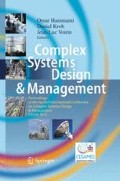Abstract
Current production processes do not fully exploit natural resources and discard a significant percentage. To exemplify, think of beer manufacturers that extract only 8% of the nutritional elements contained in barley or rice for the fermentation process while all the rest of the resource is thrown away as waste. To restrain this phenomenon we developed, in collaboration with Neosidea Group, an instrument for making the changes needed on the level of the management, organization and procurement of raw materials and energy. We can start seeing the importance of creating an IT instrument based on the concept of an open-loop system that can help companies, according to their business purpose or geographical location, to organize themselves into "ecological networks" to achieve production that moves towards zero emissions by means of sustainable management and valorization of waste: by following the first principle of Systemic Design, waste (output) of one productive system can be used as a resource (input) for another. Linked enterprises could reach a condition of reciprocal advantage by allowing the reutilization of the materials put out by their production processes; profits can be obtained from the sale of these outputs. The constant exchange of information and sharing of knowledge between the players involved allows a continuous systemic culture to spread, along with the concepts of prevention and the ongoing improvement of the environment. Essentially this paper presents an IT network at the service of the environment, a web that speaks to the earthly roots of humanity and the deep need for a revived attention to nature and the resources it offers. The huge amount of data obtained by using Systemic Software is a precious asset and a vital platform for designer, scholars of the environment, researchers, ecologists, public agencies, local administrators and, obviously, for entrepreneurs, who will be able to work in a more sustainable way. The combination of the systemic approach and this technological support instrument improves understanding that an effective environmental protection is not in conflict with the economic growth of enterprises.
Access this chapter
Tax calculation will be finalised at checkout
Purchases are for personal use only
Preview
Unable to display preview. Download preview PDF.
References
Bistagnino, L.: Design sistemico. Progettare la sostenibilità produttiva e ambientale in agricoltura, industria e comunità locali. Slow Food Editore, Bra, CN (2009)
Capra, F.: The Hidden Connections. Doubleday, New York (2004)
Ceppa, C.: Resources management tool to optimize company productivity. In: MOTSP 2010 - Management of Technology – Step to Sustainable Production, pp. 1–7. Faculty of Mechanical Engineering and Naval Architecture Zagreb, Croatia (2010)
Ceppa, C.: Software sistemico output-input. Unpublished doctoral dissertation, Politecnico di Torino, Italy (2009)
Ceppa, C., Campagnaro, C., Barbero, S., Fassio, F.: New Outputs policies and New connection: Reducing waste and adding value to outputs. In: Cipolla, C., Peruccio, P.P. (eds.) Changing the Change: Design Vision, Proposal and Tools, pp. 1–14. Allemandi, Turin (2008)
Ganapini, W.: La risorsa rifiuti, pp. 151–153. ETAS Libri, Milan (1985)
Lanzavecchia, C.: Il fare ecologico. Paravia, Turin (2000)
Rasetti, A.: Il filmato interattivo. Sperimentazioni. Time & Mind Press, Turin (2008)
Author information
Authors and Affiliations
Editor information
Editors and Affiliations
Rights and permissions
Copyright information
© 2012 Springer Berlin Heidelberg
About this paper
Cite this paper
Ceppa, C. (2012). How to Design and Manage Complex Sustainable Networks of Enterprises. In: Hammami, O., Krob, D., Voirin, JL. (eds) Complex Systems Design & Management. Springer, Berlin, Heidelberg. https://doi.org/10.1007/978-3-642-25203-7_7
Download citation
DOI: https://doi.org/10.1007/978-3-642-25203-7_7
Published:
Publisher Name: Springer, Berlin, Heidelberg
Print ISBN: 978-3-642-25202-0
Online ISBN: 978-3-642-25203-7
eBook Packages: EngineeringEngineering (R0)

